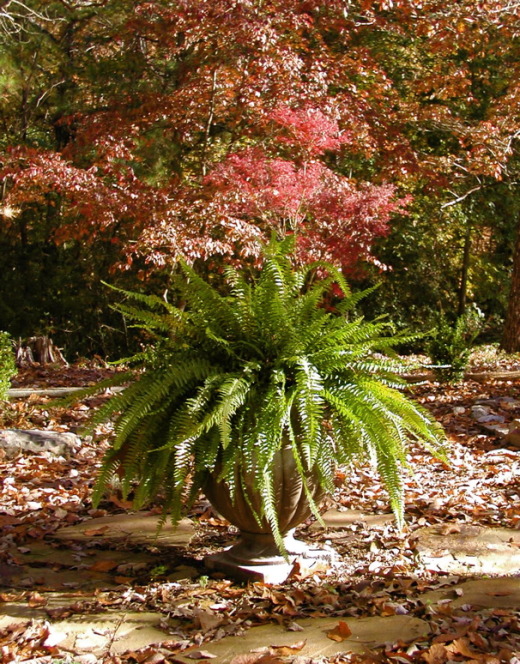Colors in the winter garden
 Sunday, January 17, 2010 at 7:00PM
Sunday, January 17, 2010 at 7:00PM Last week the temperature soared into the fifties, and plans and visions of spring swirled through my head. Today winter returned with cold air and drizzle, and I am reminded it is still January. So this afternoon I decided to see what surprises the winter garden had for me, for there is always a surprise. Always.
Today it was color.
First thing I saw was my Lady, of the Lady Garden. She is visiting the patio for the winter, for she is made of terra cotta and could crack during the hardest freezes. She is staying close to the house so I can bring her in easily when needed. She recently acquired a new hairdo of variegated ivy, because the charming woman was going bald as her hair of creeping fig went dormant. The Lady is a bright spot in the winter landscape.
Also on the patio is an old concrete planter that belonged to my parents. The side of it is covered with deep green moss. I like the pattern it makes.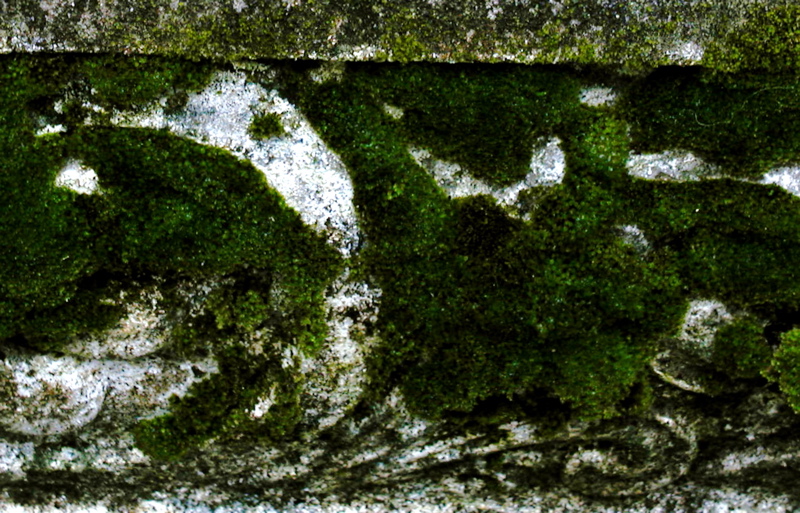
The bluebird house near the Lady Garden stands out against the browns and grays of nearby trees and shrubs. I once read that bluebirds are attracted to the color blue. I guess it works, because each spring bluebirds nest in this house.
Another bird house sits in the herb bed. No bird has ever lived here, possibly because Lily, our dog, is in the fenced-in area just a few feet away. Or maybe birds don't like its artificial wood material. I do like the way it looks, although its pastel colors have faded. I will need to paint it soon.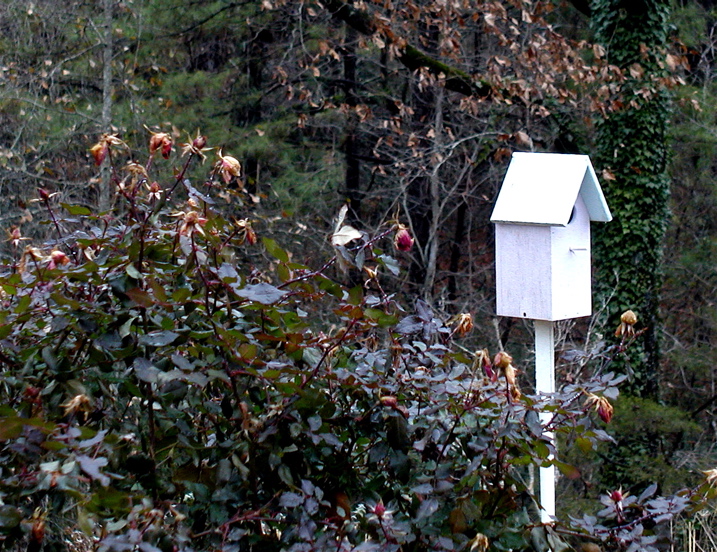
The knockout rose bushes were frosted by our recent frigid temperatures, but amazingly, the shrubs still have leaves and vestiges of pink colored buds.
I did a double take when I saw the fresh colors of the false holly, osmanthus heterophyllus 'Goshiki'. Could that be new growth?
I didn't wear gloves on my garden stroll today, and by the time I got to the woodland garden, my hands were frozen. But it was worth it. The nandina are really standing out now.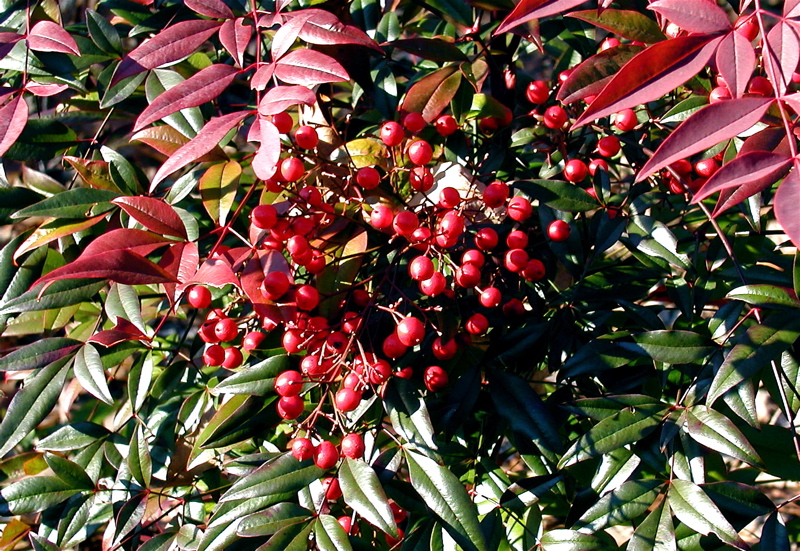
I love the way their red berries and bright foliage look against the dark trunks of nearby trees.
The autumn ferns also look lovely against a background of nandina. 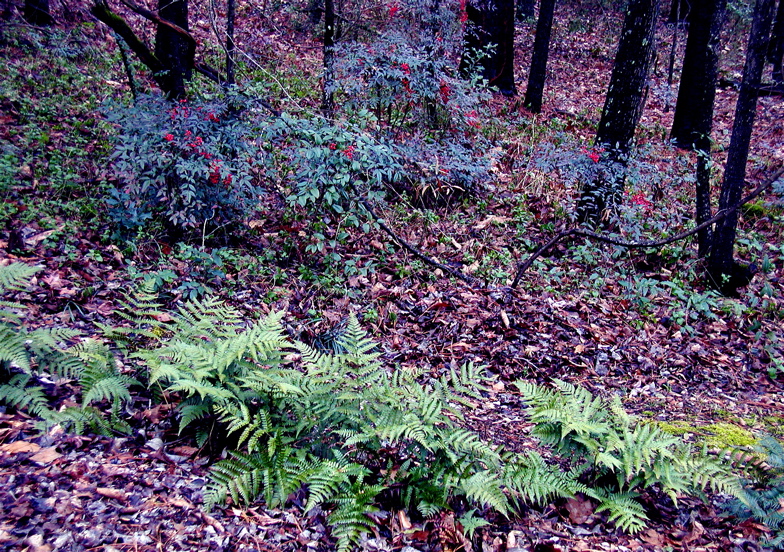
Spreading juniper 'Saybrook Gold' has beautiful gold tipped foliage. 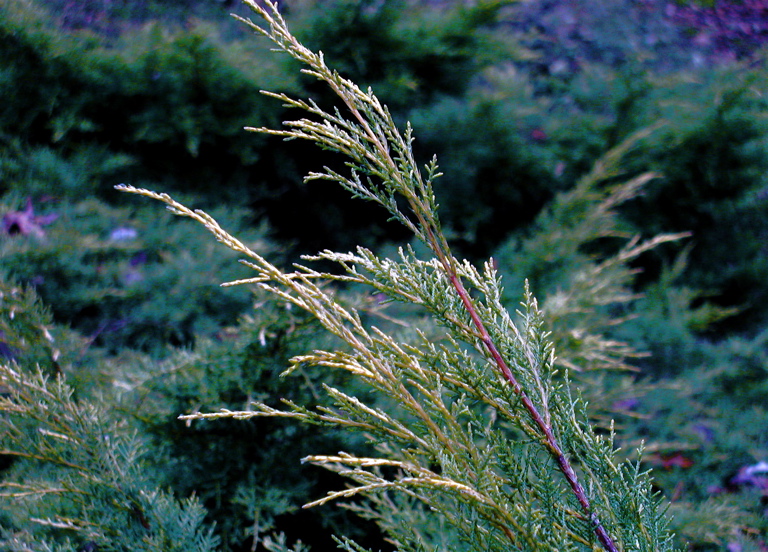 The woodland garden is one of my favorite places. I do a lot of editing, but I let nature run its course for the most part. I like the colors and textures of mosses and lichens, rocks, and decaying wood.
The woodland garden is one of my favorite places. I do a lot of editing, but I let nature run its course for the most part. I like the colors and textures of mosses and lichens, rocks, and decaying wood.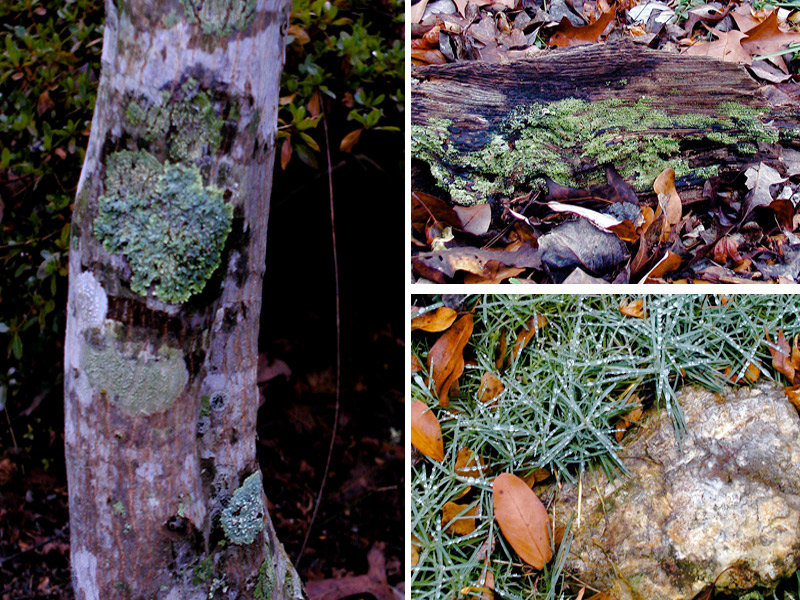

There are many shades of green in my woodland garden, and I am reminded to appreciate the subtle beauty that winter offers on a cold January day. 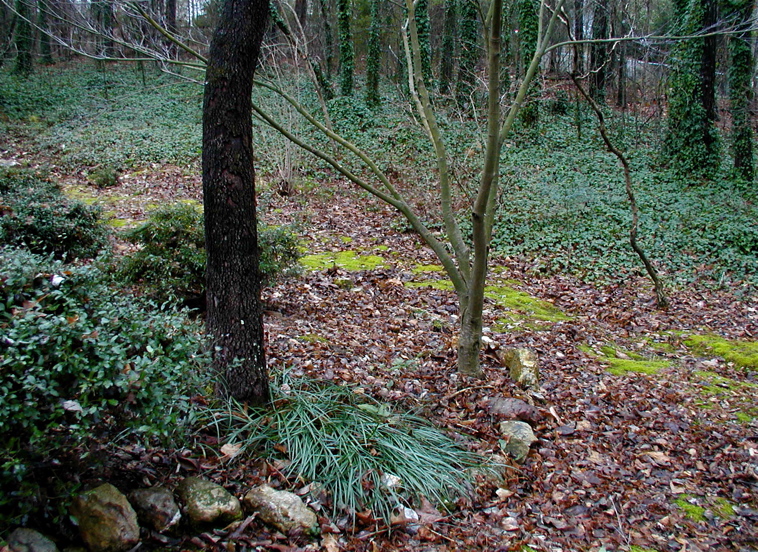
When I ended my garden stroll, I went back inside the house and placed my icy hands against my husband's face. He immediately got the message and built a fire in the fireplace. Soon spring will come, but for now I am content to dream about it while I watch the crackling flames.
Stay warm, everybody! Deborah
You might also like "A perfect day in November" or "Fall colors in my garden".
